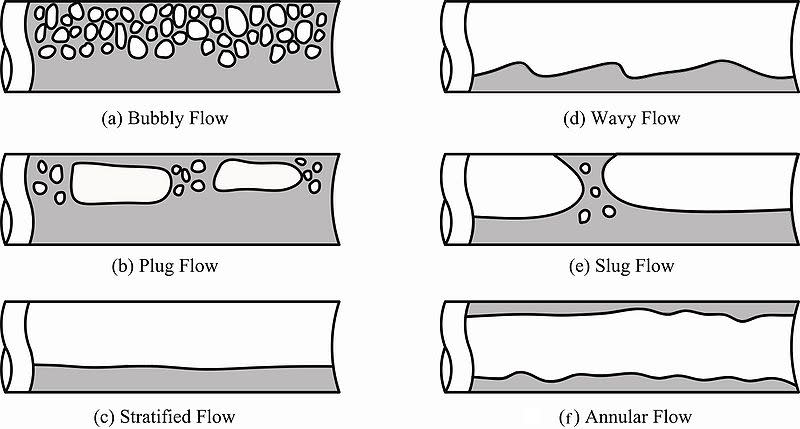Fooooks
Mechanical
- Sep 15, 2016
- 48
Hi all, thanks for taking the time to read this.
I would like to know how a horizontal pipeline that is flowing a fluid reacts when air is added to it.
Background: I am looking to analyze the suction piping of a pump to program a variable frequency drive (VFD). Under normal conditions, the pipe is pumping vegetable oil from railcars to a tank with the use of a long suction pipe (10") and hoses (4") connecting to each rail car. We can determine the minimum suction pressure to prevent cavitation and can program the VFD accordingly. When the rail cars empty one at a time, then atmospheric air starts entering the system, at which time the pump and pipelines vibrate. I'd like to understand the fluid dynamics more on the suction piping so I can either a.) eliminate/evacuate the air from the pipe, or b.) set up the VFD to respond to the air in the system and slow the pump down.
So my question is this: If air is being pushed through the pipe, what is happening in regards to pressure, flow, cross sectional area, friction losses, specific gravity, and so forth? Attached is a rough sketch of the scenario.
I am open to give more information and hope this will serve as some informative and valuable discussion, as I cannot seem to find too much literature on the topic.
Thanks,
Fooooks
I would like to know how a horizontal pipeline that is flowing a fluid reacts when air is added to it.
Background: I am looking to analyze the suction piping of a pump to program a variable frequency drive (VFD). Under normal conditions, the pipe is pumping vegetable oil from railcars to a tank with the use of a long suction pipe (10") and hoses (4") connecting to each rail car. We can determine the minimum suction pressure to prevent cavitation and can program the VFD accordingly. When the rail cars empty one at a time, then atmospheric air starts entering the system, at which time the pump and pipelines vibrate. I'd like to understand the fluid dynamics more on the suction piping so I can either a.) eliminate/evacuate the air from the pipe, or b.) set up the VFD to respond to the air in the system and slow the pump down.
So my question is this: If air is being pushed through the pipe, what is happening in regards to pressure, flow, cross sectional area, friction losses, specific gravity, and so forth? Attached is a rough sketch of the scenario.
I am open to give more information and hope this will serve as some informative and valuable discussion, as I cannot seem to find too much literature on the topic.
Thanks,
Fooooks

